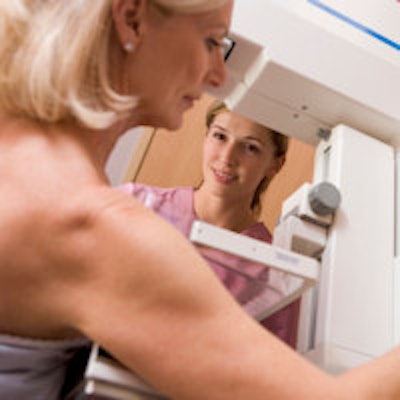
Unequal access to breast imaging across the U.S. -- especially advanced services such as ultrasound, breast MRI, and image-guided biopsy -- can lead to delays in diagnosis and negative outcomes. So how accessible are these services to women who might be considered vulnerable because of racial, social, or economic barriers?
It's an important question, according to a study published in the Journal of Medical Screening. Not only do women of racial or ethnic minority backgrounds, those with lower education levels and income, and those living in rural settings tend to have higher breast cancer mortality rates than "nonvulnerable" women, they also tend to have lower rates of screening, longer wait times for diagnostic evaluation after an abnormal screen, and more advanced cancer at diagnosis.
 Dr. Christoph Lee from the University of Washington.
Dr. Christoph Lee from the University of Washington."Recent analyses have shown both disadvantages in geographic access to and utilization of advanced breast imaging technologies among vulnerable women," wrote the group led by Dr. Christoph Lee from the University of Washington. "[These women] continue to bear a disproportionate burden of breast cancer mortality."
Not as bad as we thought?
To explore whether disparities in access to breast imaging services are due to the physical availability of advanced imaging, Lee's group compared facilities serving vulnerable patient populations to those serving nonvulnerable populations.
The researchers used data from 73 imaging facilities and almost 800,000 mammograms performed across five regional registries between 2011 and 2012. The registries were located in Chicago, North Carolina, San Francisco, Vermont, and western Washington. Advanced breast imaging procedures included ultrasound, MR, stereotactic core breast biopsy, ultrasound-guided core breast biopsy, and MR-guided core breast biopsy (J Med Screen, March 2016, Vol. 23:1, pp. 24-30).
Most of the facilities included in the study were nonprofit hospital-based full diagnostic radiology practices, and were not academically affiliated. Forty-seven percent were categorized as serving a vulnerable patient population.
Contrary to their hypothesis that advanced imaging and biopsy would not be as readily available at facilities serving vulnerable populations, Lee and colleagues found that imaging facilities serving these women were as likely or more likely to have these services available, compared with facilities serving nonvulnerable women.
| Availability of advanced breast imaging and image-guided biopsy | |||||
| Vulnerability characteristic | US | Breast MR | US-guided biopsy | MR-guided biopsy | Stereotactic-guided biopsy |
| Education | |||||
| Vulnerable | 75% | 37.5% | 62.5% | 37.5% | 37.5% |
| Not vulnerable | 75.4% | 43.6% | 55.4% | 26.8% | 39.3% |
| Race/ethnicity | |||||
| Vulnerable | 76.9% | 53.8% | 69.2% | 53.8% | 53.8% |
| Not vulnerable | 75% | 39.7% | 54.2% | 23.7% | 35.6% |
| Rural location | |||||
| Vulnerable | 95% | 15% | 70% | 15% | 35% |
| Not vulnerable | 67.9% | 50.9% | 50.9% | 34% | 39.6% |
| Income | |||||
| Vulnerable | 90.5% | 28.6% | 66.7% | 23.8% | 38.1% |
| Not vulnerable | 69.2% | 46.2% | 51.9% | 30.8% | 38.5% |
There was a significant relationship between rural populations and decreased availability of breast MR, which is consistent with previous research showing that rural residents have longer travel times to facilities where breast MR is available, the researchers wrote.
Filling the knowledge gap
The study findings address a knowledge gap regarding the relationship between the availability of healthcare resources and disparities in cancer care, according to Lee and colleagues.
"Our findings suggest that physical onsite availability does not contribute to observed health disparities among vulnerable populations in relation to accessing advanced breast imaging services," they wrote.
But there's no time for complacency, the researchers cautioned: The study results do not mean that there are no disparities in access to and utilization of advanced breast imaging services. For example, the research did not address other factors such as patient insurance status and additional out-of-pocket expenses.
"Many institutions, including our own, are struggling to understand why it is that some women don't access imaging technology that could lead to better disease outcomes," Lee told AuntMinnie.com. "And it's not just at the point of diagnostic workup after an abnormal mammogram, but also treatment follow-through."
More investigations into the disparities in healthcare delivery are necessary, and radiologists are key to the effort, Lee said.
"Given how crucial imaging is to screening and diagnosis of disease as well as managing treatment, radiologists have a pretty central role in making sure vulnerable populations are getting the care they need and deserve," he said. "There are a lot of opportunities for this research, and we need more radiologists to take the lead."



















